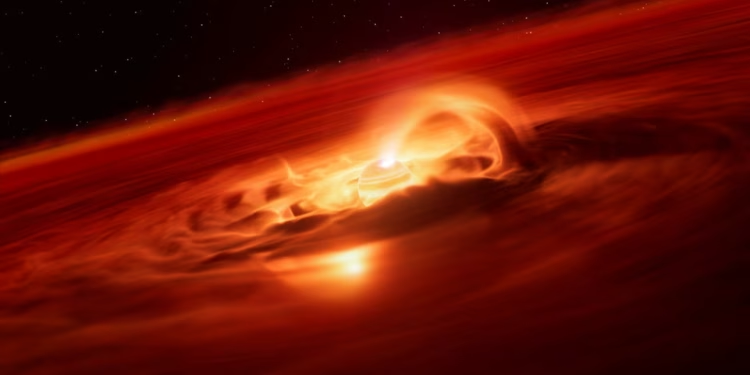Register here.
At its peak in August this year, it was consuming the material at a rate of six billion tonnes per second, about eight times faster than just a few months earlier.
“This object is about one to two million years old. It is very young by astronomical standards,” Almendros-Abad said.
Almendros-Abad said the rogue planet appears to be in its final stages of formation and is not expected to gain much more mass. Researchers believe it has powerful magnetic fields channeling matter from the swirling disk inward, a phenomenon so far observed only in stars.
Rogue planets, also known as free-floating planetary-mass objects, typically have a mass several times that of Jupiter, existing as isolated systems free-floating in space and not gravitationally bound to a host star.
“How these objects form remains an open question,” said Belinda Damian, co-author of the study and an astronomer at the University of St Andrews in Scotland.
In theory, Damian said, they can form like stars do through the collapse of an interstellar cloud of gas and dust, known as a molecular cloud, or they can form like an ordinary planet in a disk of material rotating around a newborn star, only to be ejected somehow from that planetary system.
Although Cha 1107-7626 – a gas giant like the largest planets in our solar system, rather than a rocky world like Earth – forms in the same way as a star, it will not achieve the mass needed to trigger hydrogen fusion at its core like a star.
Cha 1107-7626 could provide a better understanding of how certain rogue planets are born.
“This is a really exciting discovery because we generally tend to think of planets as calm, stable celestial bodies, but we now see that these objects can be dynamic, just like stars in their nascent stage,” Damian said. “This somehow blurs the line between stars and planets and gives us insight into the earliest periods of rogue planet formation.”
Reporting by Will Dunham, editing by Rosalba O’Brien
Our Standards: The Thomson Reuters Trust Principles.









